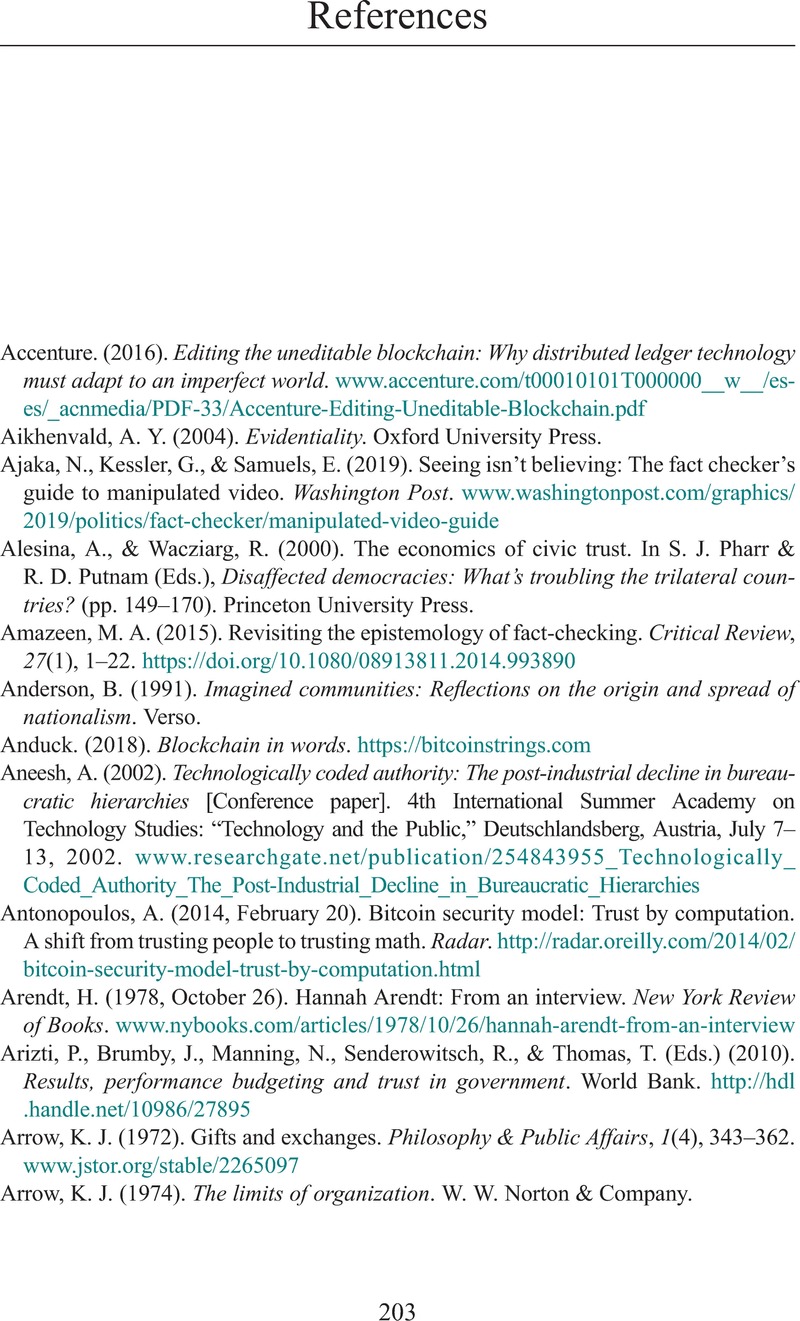References
Published online by Cambridge University Press: 01 April 2022
Summary

- Type
- Chapter
- Information
- Searching for TrustBlockchain Technology in an Age of Disinformation, pp. 203 - 246Publisher: Cambridge University PressPrint publication year: 2022

